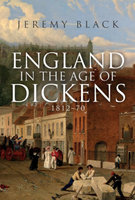New, Quality Gift Books - 50-90% off - over 2500 titles
Your basket is empty.
Categories Art & Architecture WILLIAM HOGARTH: Visions In Print
WILLIAM HOGARTH: Visions In Print
Book number: 95437
Product format: Hardback
In stock
Bibliophile price
£6.00
Published price
£12.99
Customers who bought this product also bought
|
TUDOR & JACOBEAN PORTRAITS: National Portrait Gallery
Book number: 95433
Product format: Paperback
Bibliophile price
£5.00
Published price
£12.95
|
TRACING YOUR GEORGIAN ANCESTORS 1714-1837
Book number: 94962
Product format: Paperback
Bibliophile price
£8.50
Published price
£14.99
|
ENGLAND IN THE AGE OF DICKENS 1812-70
Book number: 95195
Product format: Hardback
Bibliophile price
£8.00
Published price
£20
|
|
DANGEROUS SEATS: Parliamentary Violence
Book number: 95191
Product format: Hardback
Bibliophile price
£6.00
Published price
£20
|
WALTER SICKERT: Sketches of Life
Book number: 95435
Product format: Hardback
Bibliophile price
£6.00
Published price
£12.99
|
NELSON, NAVY AND NATION
Book number: 94764
Product format: Hardback
Bibliophile price
£12.00
Published price
£36.95
|
Browse this category: Art & Architecture















